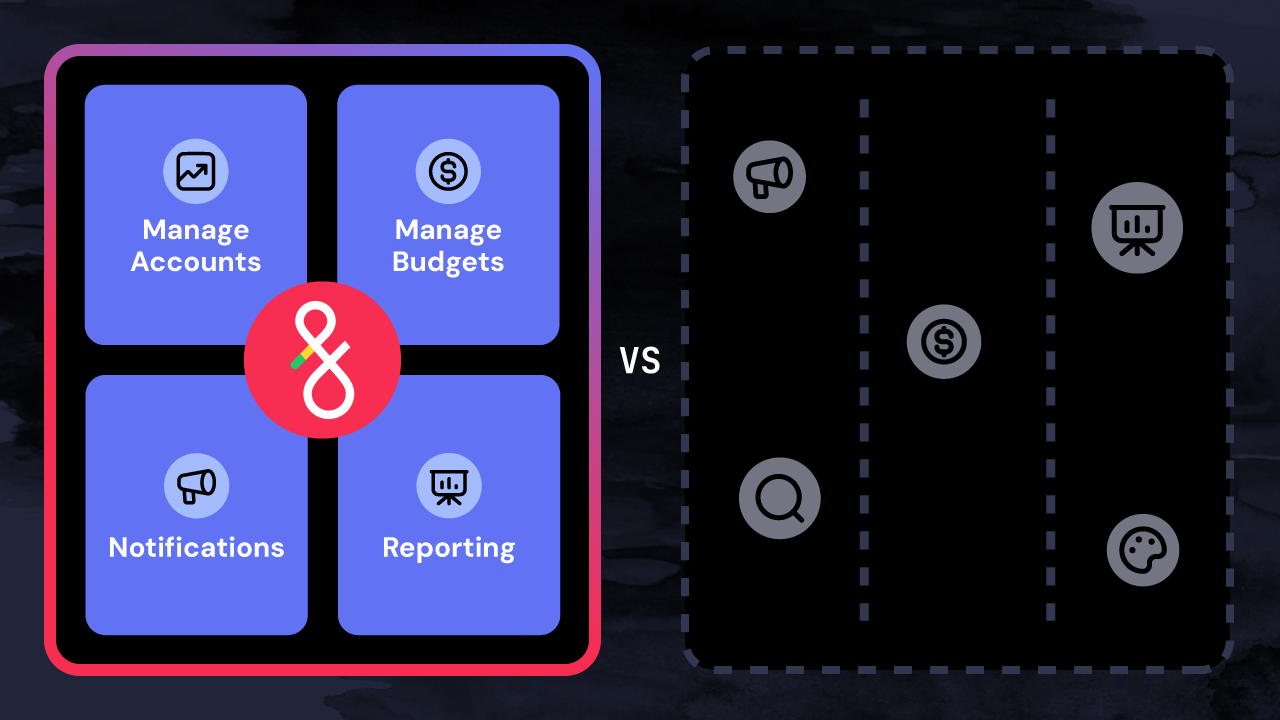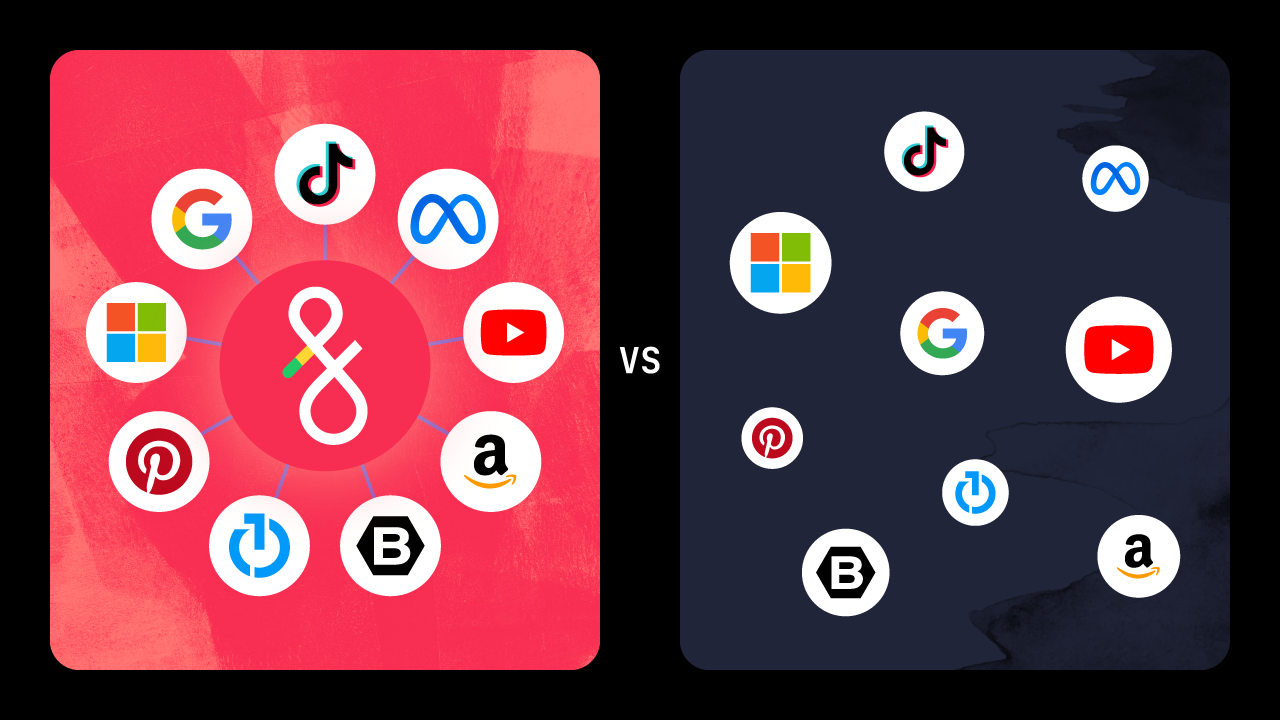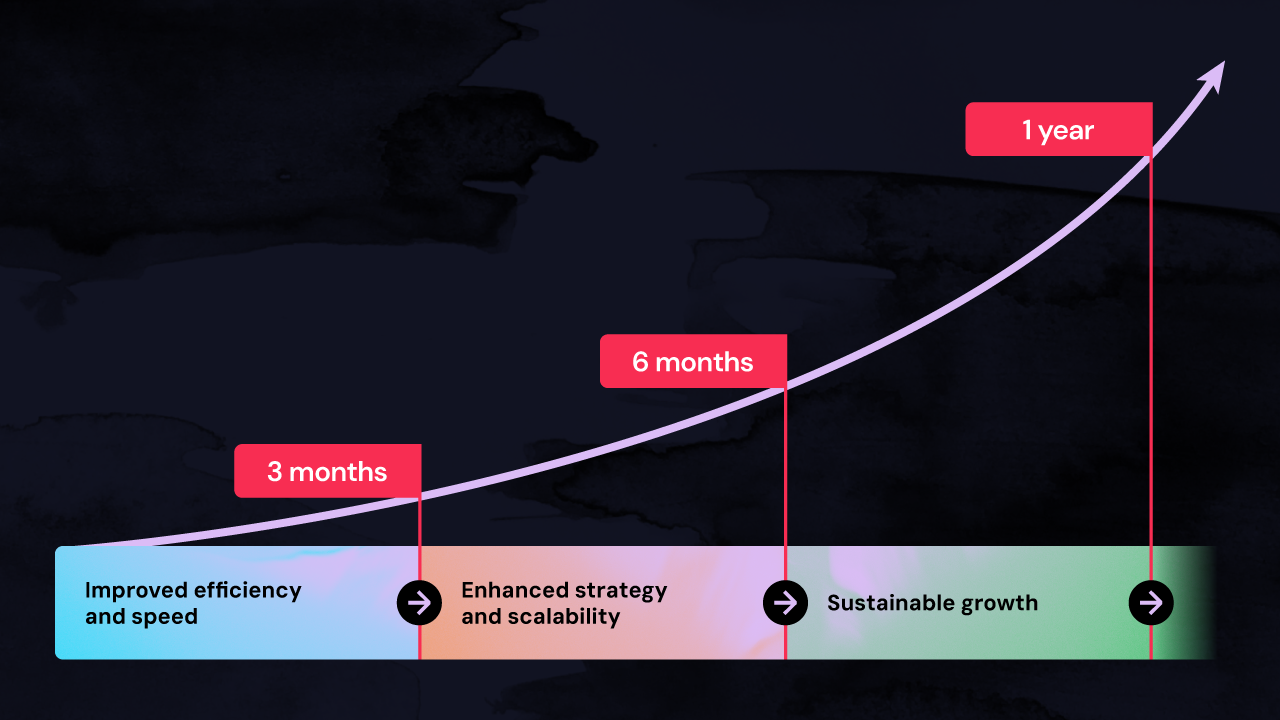Efficiency, flexibility and productivity are all a direct result of automation. With minimal human intervention required, teams have an opportunity to automate low-value work and gain more time to make efficient and impactful decisions. Not only that, automation improves employee performance and sentiment as they have more hours in their workday to dedicate to work that fulfills them, and in turn, keeps your business thriving and performing in new ways.
We've already covered the cost of manual work for advertising agencies. But there’s also risks currently facing your business in regard to your human teams if you’re not using AI-powered automation.
How does automation help ad agencies manage labor costs and high employee turnover?
In today’s market there’s two things at odds against organizations—high turnover of high valued employees and/or the looming shadow of having to make difficult business decisions, like laying off a percentage of your workforce. Neither are desirable, but a harsh reality in today’s environment where we’re teetering towards a recession. With increased labor costs creating further complexities, executives who aren’t already looking to automation—or starting—are likely to enter a vicious cycle where they either need to hire but can’t afford the overhead, or are staffed disproportionately and need to make the difficult decisions we mentioned above.
Here’s the simple truth: automation allows organizations to reduce the necessary staff it takes to complete a particular task. When you instead automate repetitive, yet critical tasks, you no longer need to hire to satisfy every facet of your digital ad campaign strategy. Instead, you can utilize the existing staff you have—all while reducing cost and improving your bottom line.
How much does manual work actually cost your agency every year?
According to Comparably, the average digital advertising strategist is earning a median salary of $85,240—so imagine the cost per hour you’re spending each time they spend half their workweek on tasks that could be automated. Let’s break it down: if they spend half of each workday on taskwork, that’s $42,620 a year per employee. Multiply that by a team of 50 and that’s $2,131,000 per year you’re spending on tasks you could have automated.
By reducing the time employees need to complete critical tasks (as well as the total number of employees needed to complete said critical tasks), automation allows for your employees to focus more time on the strategic, forward-thinking work that drives revenue for your business. When you have more labor hours available to you and more productive hours for your whole team, everybody wins. Another aspect of automation to consider is how to utilize it to make better, quicker and more thoughtful staffing projections. By leveraging automation, the need to hire may not be as frequent as you can reorganize your teams so the ones you have can focus on strategy, and where you used to hire for task work can now be automated.
Automation improves both employee fulfillment and client satisfaction
Pre-pandemic, it seems like many advertisers just went through the motions of their role. Post-pandemic, these same advertisers are looking for more fulfilling aspects of their career. As such, overall employee sentiment is more critical than ever for two reasons: one, you want to keep your highly valued employees, your employees. Second, it costs your company each time an employee churns. Automation is looked at for efficiency purposes but it also serves as an opportunity to create a more satisfying experience for your employees.
Look at an organization using automation. The company is able to automate task work and prioritize the strategic work that keeps employees happy and thriving. On the not so obvious—yet critically important—side, automation also allows the company to move at the demands of customers. When the employees who manage client relationships and sentiment can quickly make changes to thousands of client accounts in minutes— (nstead of hours or days), clients are happier. Plus, the the employees managing those accounts will be, too., since it's a lot less work for them.
Ready to automate? Fluency is your ideal automation partner
As you can see, manual tasks are time-consuming and they’re also costly. When you choose automation, you’re also choosing a better quality of life for your existing staff and positioning your organization for success. The examples we highlighted above are just the beginning—there’s a number of ways not automating may be costing you.
Once you’re ready to make a use case for automation, you’ll need a partner to empower your business with the right software and tooling. Fluency can do exactly that—helping your business to dramatically cut costs, streamline its processes and improve both employee and client sentiment. Get in touch with our team to learn more.






